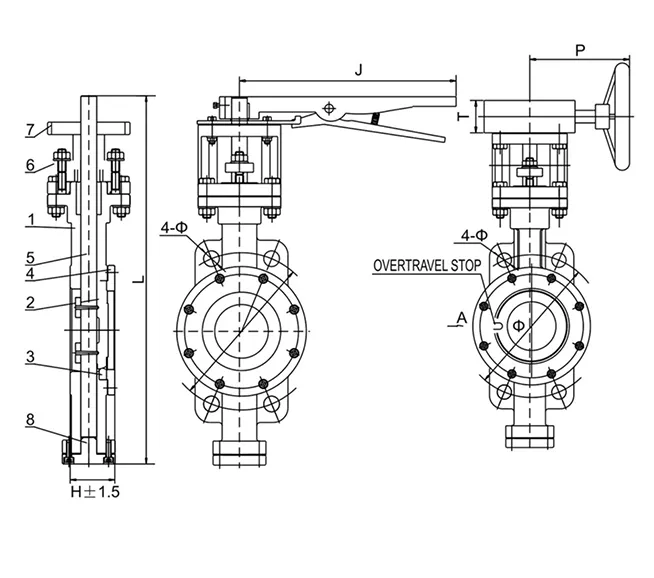12 月 . 03, 2024 14:37 Back to list
Exploring the Benefits and Applications of Rubber Joints in Various Industries
Understanding Rubber Joints An Overview
Rubber joints, known for their flexibility and durability, play a crucial role in various industrial applications. These components, often made from synthetic rubber, are designed to absorb vibrations, accommodate misalignment, and reduce noise in piping and duct systems. Their versatility and robust performance make them an essential part of modern engineering, especially in plumbing, HVAC systems, and construction.
What is a Rubber Joint?
A rubber joint, also referred to as an expansion joint or flexible joint, is a device that connects two parts of a piping system. Its primary function is to allow movement due to thermal expansion, vibration, or misalignment. Traditionally, rubber joints consist of two flanged ends with a rubber section in between. This design allows the joint to flex and absorb forces from the connected piping systems, which can be subjected to various stresses.
Types of Rubber Joints
Rubber joints come in various types, each tailored for specific applications
1. Standard Rubber Joints These are the most common type, featuring a single layer of rubber. They are typically used in water and sewage applications.
2. Multi-Layer Rubber Joints These joints consist of multiple layers of rubber designed to provide enhanced durability and resistance to higher pressures.
3. High-Temperature Rubber Joints Made from specialized materials, these joints can withstand elevated temperatures suitable for applications in industrial processes.
4. Anti-Vibration Rubber Joints Designed specifically to minimize vibrations, these joints are commonly used in machinery and engine applications where excessive vibration is a concern.
5. Custom Rubber Joints Many manufacturers offer custom solutions tailored to an organization’s specific needs, which often include different sizes, shapes, and rubber compounds.
Benefits of Using Rubber Joints
The advantages of using rubber joints are significant. Here are some of the primary benefits
- Flexibility Rubber joints can accommodate movement, allowing for adjustments due to thermal expansion or ground settling without causing damage to the piping system.
rubber joint

- Vibration Dampening These joints effectively absorb vibrations from pumps and engines, reducing noise levels and enhancing the lifespan of equipment.
- Easy Installation Rubber joints are typically lighter than metal counterparts and can be installed relatively quickly, resulting in reduced labor costs.
- Corrosion Resistance Since rubber is naturally resistant to corrosion from various chemicals, rubber joints are suitable for many industrial environments.
- Cost-Effective Compared to other types of expansion joints, rubber joints tend to be more affordable, making them a popular choice for budget-conscious projects
.Applications of Rubber Joints
Rubber joints find utility across a range of industries
- Plumbing They connect different sections of piping, helping to absorb shock and prevent pipe failure from unexpected movements.
- HVAC Systems In heating, ventilation, and air conditioning systems, rubber joints help reduce noise and ensure smooth operation.
- Manufacturing Factories often use rubber joints in machinery to minimize wear and tear caused by vibrations.
- Construction Used in building foundations and structures, rubber joints accommodate shifts and movements in the earth.
Maintenance and Care
While rubber joints are designed for durability, regular inspection and maintenance are crucial for optimal performance. Over time, factors such as UV exposure, extreme temperatures, and chemical exposure can degrade rubber. Keeping an eye out for cracks, deformation, or wear can help prevent unexpected failures. Cleaning the joints periodically and ensuring they are free from contaminants will prolong their lifespan.
Conclusion
Rubber joints are indispensable components in various systems, offering flexibility, durability, and cost-effectiveness. Their ability to absorb vibrations and accommodate movement makes them an optimal choice for industries ranging from plumbing to manufacturing. Understanding the various types and applications of rubber joints can aid engineers and technicians in selecting the right component for their specific needs, ultimately enhancing system performance and longevity. As industries continue to evolve, the demand for reliable rubber joints will likely grow, reflecting their integral role in modern engineering solutions.
Share
-
Understanding the Differences Between Wafer Type Butterfly Valve and Lugged Butterfly ValveNewsOct.25,2024
-
The Efficiency of Wafer Type Butterfly Valve and Lugged Butterfly ValveNewsOct.25,2024
-
The Ultimate Guide to Industrial Swing Check Valve: Performance, Installation, and MaintenanceNewsOct.25,2024
-
Superior Performance with Industrial Swing Check Valve: The Essential Valve for Any SystemNewsOct.25,2024
-
Industrial Swing Check Valve: The Ideal Solution for Flow ControlNewsOct.25,2024
-
You Need to Know About Industrial Swing Check Valve: Functionality, Scope, and PerformanceNewsOct.25,2024